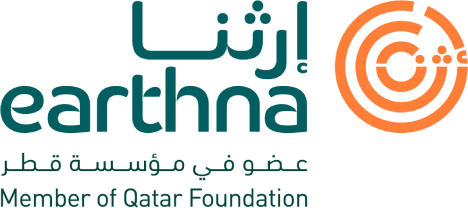
2023 was the hottest year on record, shattering records dating back to the mid-1850s, and driving a heightened sense of urgency around climate action. 2024 might be even hotter, as evidenced by more frequent and longer lasting extreme heat waves across the world.
In the Middle East, already one of the hottest regions on earth, temperatures have risen twice as fast as the global average. Characterized by arid environments, countries in this region have their own set of challenges and needs, necessitating a distinct framework for advancing sustainability policy and solutions. But they’re not alone. Over one-third of the world’s population live in countries—such as vast areas of Western Asia, northwestern parts of the Indian subcontinent, and South America—with hot and arid environments.
BUILDING MORE RESILIENT CITIES
As we think about the future of our cities—and what they need to prosper in sustainable ways—it’s important to remember that civilizations have lived in hot and arid climates for thousands of years and have developed unique social and cultural behaviors to adapt in their environments. Traditional ancestral knowledge provides a rich source of understanding about the natural world that must be leveraged to inform modern approaches to sustainability.
In Qatar’s capital city of Doha, where the country’s energy demand is highest, developers are integrating sustainable design principles that harmonize ancient practices and modern architecture to offset heat and reduce the city’s carbon footprint. Msheireb Downtown Doha is one such example. A historic city district that was revitalized over a 12-year period, it features traditional architectural elements, such as the malqaf, a high parapet used to create cross ventilation and passive cooling, and mashrabiya (decorative lattices) that provide shade and privacy, resulting in a 30% reduction in energy consumption. An advanced waste collection system means that most of the district’s waste is recycled or reused, and irrigation systems reduce water usage. Architects have upheld the district as a blueprint for sustainable urban regeneration.
Cities in hot and arid regions clearly face very different challenges to those in more temperate climates. However, throughout history, these cities have adapted and innovated to thrive, despite the harsh conditions. The sustainability frameworks we’re working on not only consider and account for extreme temperatures and dry environments, they’re tailored to include both ancient and modern solutions that can benefit today’s cities.
ACCELERATING SOLUTIONS THAT CAN BE USED ACROSS GEOGRAPHIES
There are indeed ways to promote sustainability in the hottest and driest climates, despite the challenges, especially when done in partnership with core stakeholder groups, including technical experts, academics, government and NGOs, businesses, and civil society. Earthna is looking to establish an Arid Cities Network that will bring together experts from cities with hot and arid environments. Through the network, we will share best practices and develop practical policy-based solutions to tackle the impact of climate change in our regions.
Hot and arid climates have a major role to play in reducing the harmful effects of climate change, no matter their location. This region holds a rich reservoir of both traditional knowledge and forward-thinking innovation for charting a course towards a more sustainable future.
A version of this piece was published by Fast Company in June 2024.
